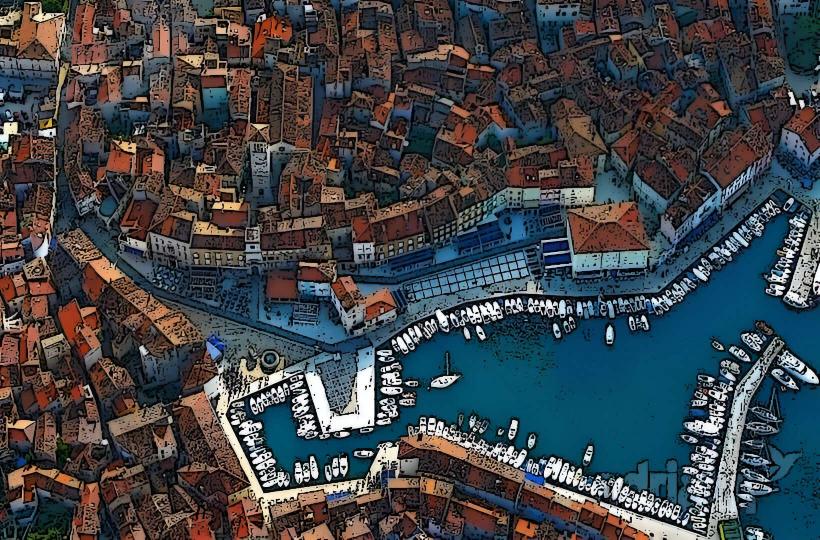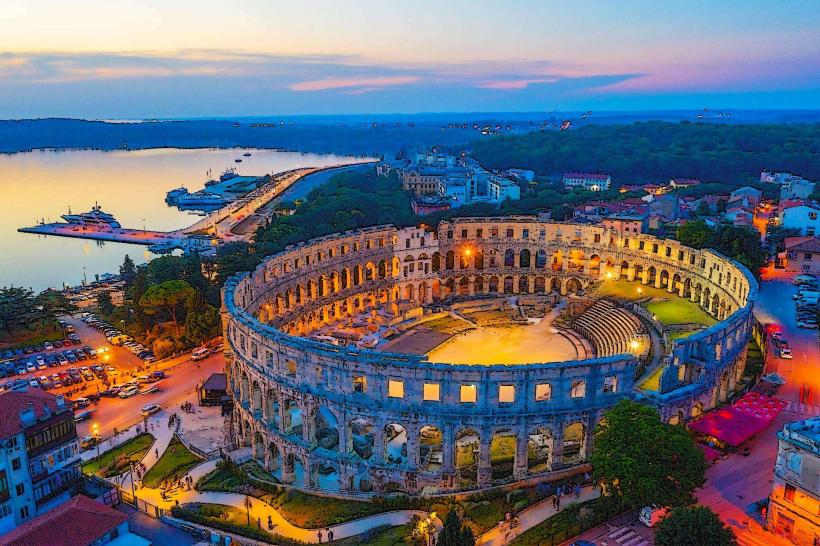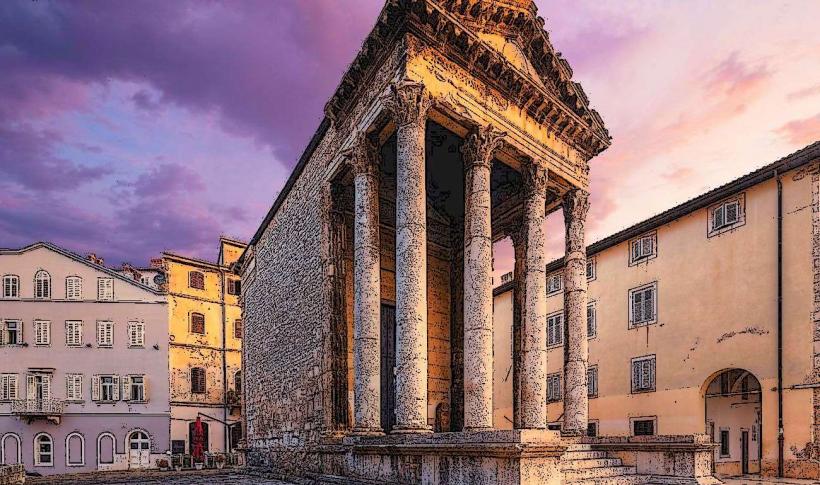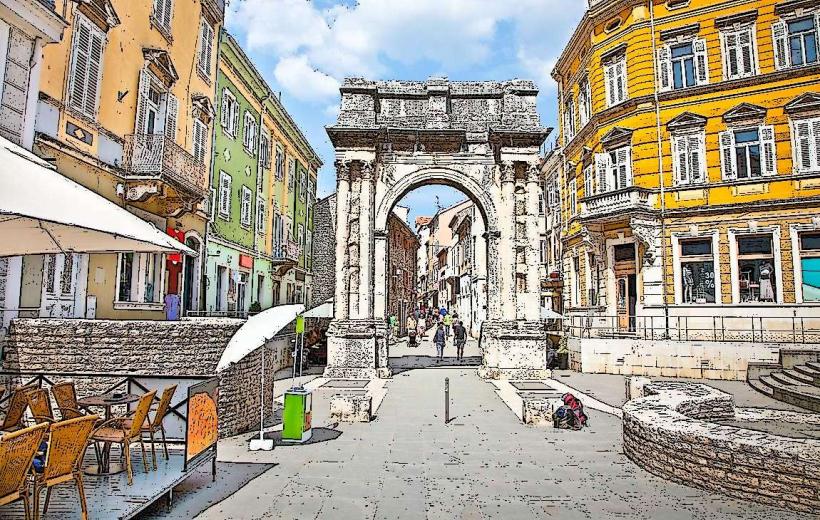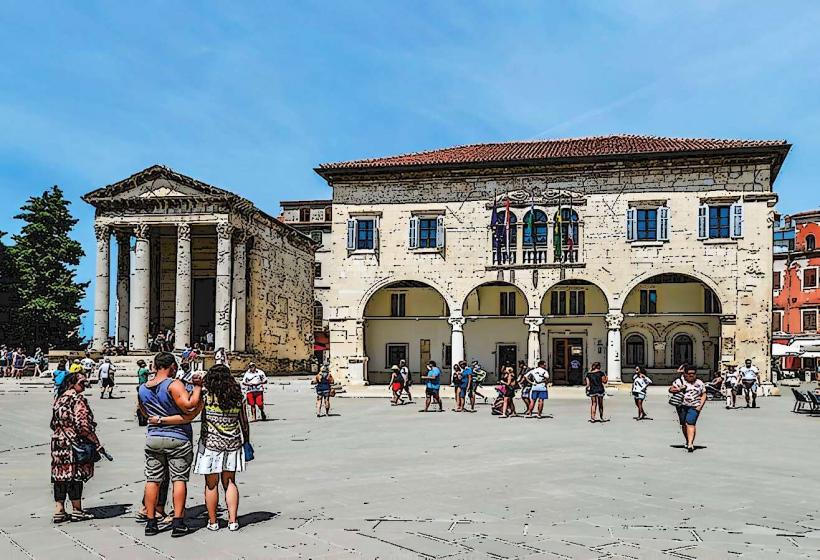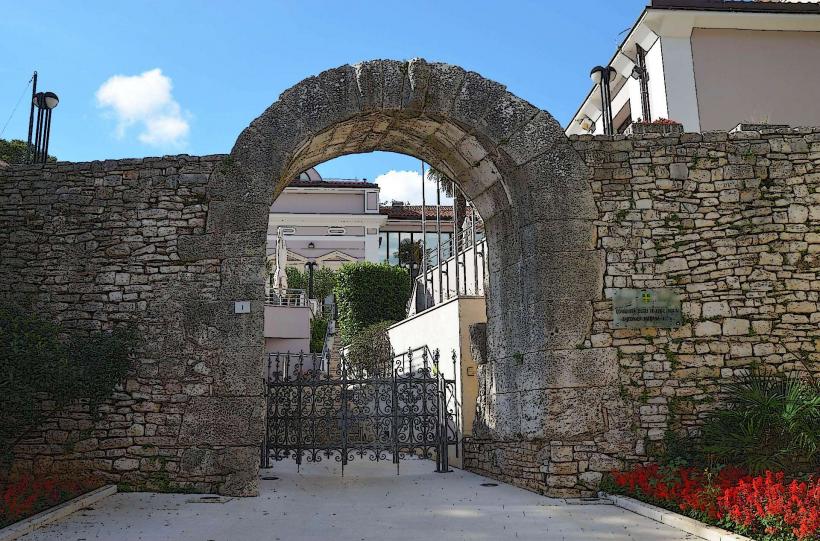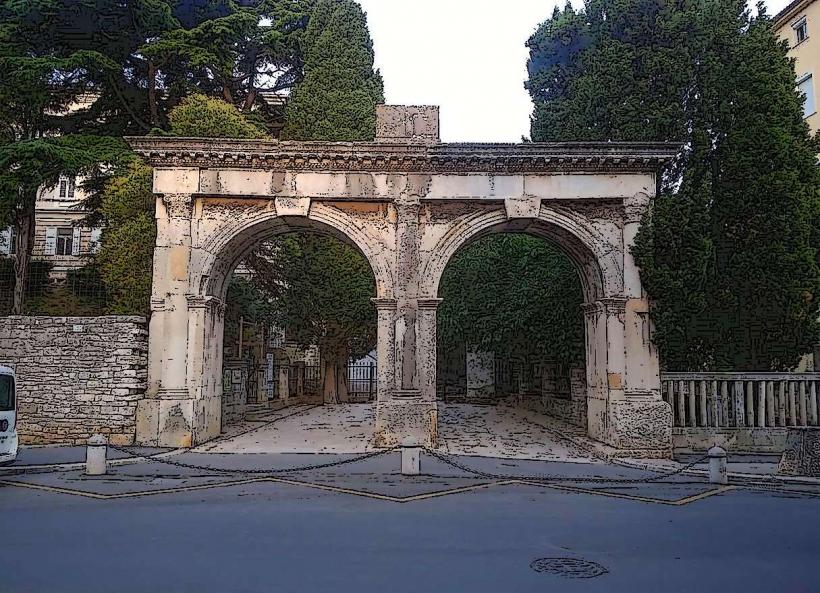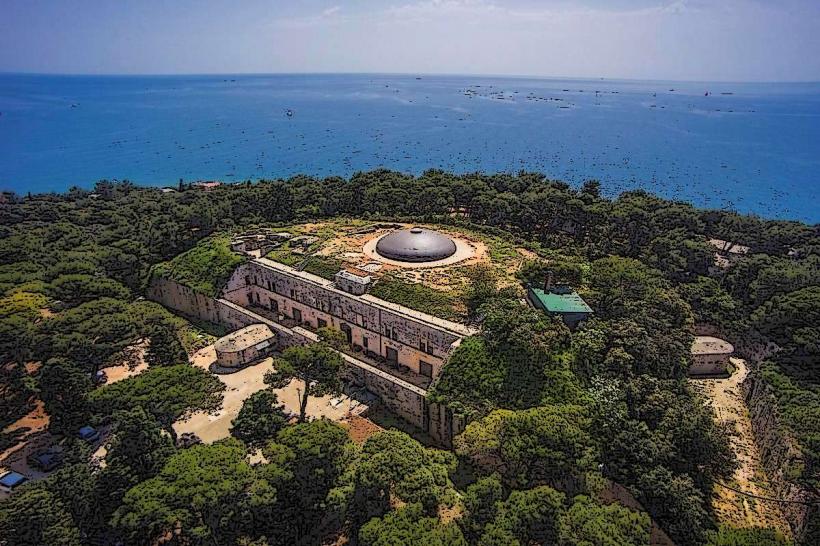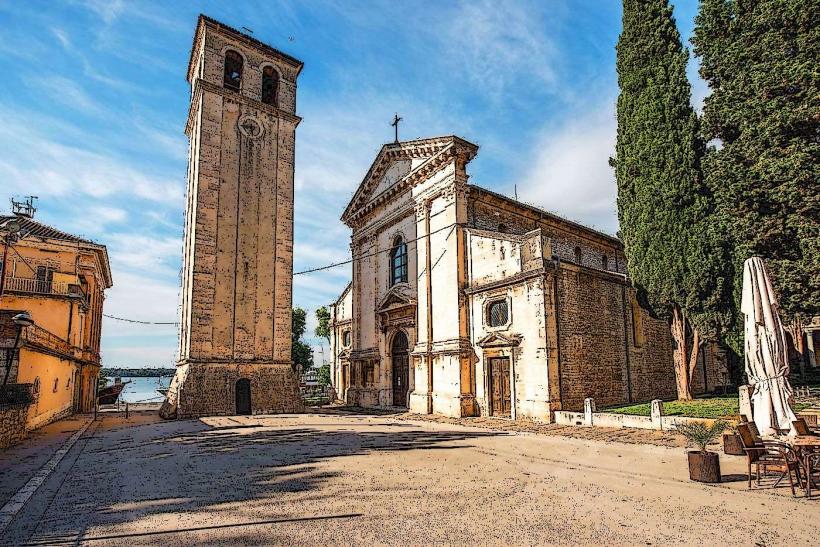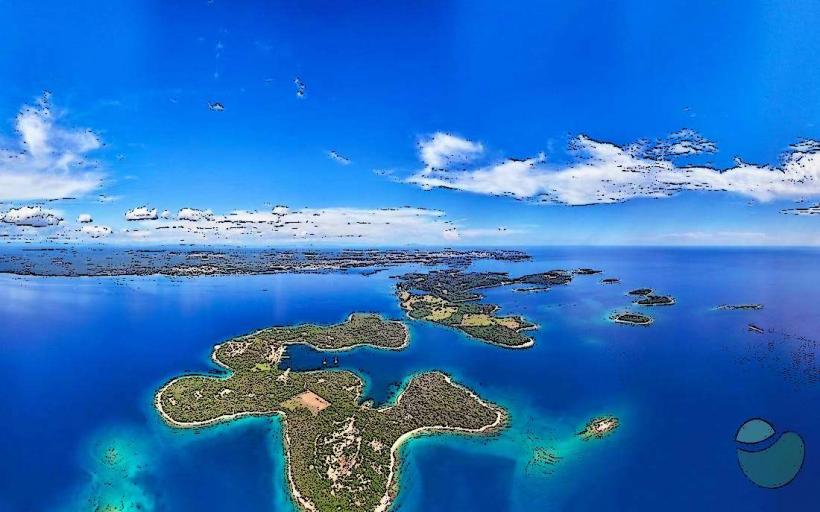Information
Landmark: ZerostrasseCity: Pula
Country: Croatia
Continent: Europe
Zerostrasse (Zero Street) – Pula, Croatia
Zerostrasse, or Zero Street, is an impressive and unique underground tunnel system located in the historic city of Pula, Croatia. It offers visitors a chance to explore an intricate network of passageways that have served different purposes throughout the city’s long history. The tunnels are part of Pula’s vast military infrastructure and are now a popular historical site, blending ancient and modern significance.
Historical Background
- Origin and Construction: The Zerostrasse tunnels were built during the early 20th century, specifically in 1912, under the rule of the Austro-Hungarian Empire. The purpose of the tunnels was to provide a military defense system for the city of Pula, which was an important naval base and military stronghold in the empire.
- Name "Zero Street": The name “Zero Street” is believed to have originated from its position beneath the city center. The word “zero” in the name likely refers to the tunnels being built as part of a defensive strategy in case of bombings, offering a strategic location beneath the city’s core.
- World War I and II Usage: During World War I and World War II, the tunnels served as an important shelter for civilians during air raids and bombings. Pula, being a significant naval hub, was frequently targeted during the wars. The Zerostrasse tunnels provided a safe haven for the population, sheltering them from enemy attacks.
Architectural Features
Tunnel Network
- The Zerostrasse system consists of several tunnels running beneath the Pula city center, and these passageways stretch for around 500 meters in total. The network was designed to accommodate the movement of troops and to provide shelter for civilians during wartime.
- The tunnels are made of stone, with walls and ceilings constructed to support the heavy weight of the earth above. Ventilation shafts are scattered throughout the system, allowing air to circulate and keeping the space habitable during long stays.
Entry Points and Access
- The main access points to Zerostrasse are located near the city center. The tunnels have been preserved and are accessible to the public as a part of Pula's historical tour offerings.
- Visitors can enter the tunnels through well-marked entrances, and there are several sections where the passageways are wide enough to allow groups of people to explore comfortably.
Design and Layout
- Inside the tunnels, the design is simple yet functional. The walls are rough-hewn stone, and the floors are smooth, making it easier to move through. The narrow passageways and low ceilings are typical of the period’s construction style, and the tunnels are designed to accommodate only foot traffic, though they were meant for quick evacuation.
- Some sections of the tunnels are well-lit with modern lighting, but the original, darker sections give a glimpse into the atmosphere of what it would have been like to take shelter during air raids.
Historical Exhibits
- As visitors explore the tunnels, they encounter historical exhibits that provide information about Pula’s military history, the role of Zerostrasse during wartime, and the Austro-Hungarian Empire's influence on the region. The exhibits include photographs, military artifacts, and maps of the city’s defense strategy.
- The tunnels also feature displays related to the World Wars, showing how the tunnels were used during air raids and other military operations.
Cultural and Historical Significance
Military and Civilian Shelter
- Zerostrasse is primarily known for its role as a shelter during the World Wars. In addition to its use as a military installation, the tunnels became crucial in protecting Pula's civilian population from the bombardments that occurred during these wars.
- The tunnels were used as air-raid shelters, providing safety and cover for thousands of people during the most dangerous times. This history of survival under duress is a significant part of the city’s collective memory.
Symbol of Pula’s Wartime History
- Zerostrasse serves as a reminder of Pula’s strategic importance during the World Wars, particularly for the Austro-Hungarian and Italian military forces. The city’s location as a major naval port meant it was a frequent target for enemy attacks.
- Today, the tunnels stand as a symbol of resilience and history, offering visitors a chance to understand the challenges faced by the people of Pula during the turbulent years of the 20th century.
Preservation of Pula's Military Heritage
- Zerostrasse is also part of a broader effort to preserve Pula's military heritage. The city was home to one of the most important military bases in the Austro-Hungarian Empire, and the tunnels are just one part of this extensive network of military installations. They provide an insight into how military strategy was applied to the city’s defense and the ingenuity behind its protective measures.
Historical Education
- The tunnels are an excellent educational resource, offering firsthand experiences of wartime history. The exhibits inside Zerostrasse are designed to educate visitors about military history, civil defense strategies, and the lives of Pula's residents during the wartime periods.
Visitor Experience
Guided Tours and Exploration
- The Zerostrasse tunnels are open to visitors as part of guided tours or self-guided exploration. The tours provide a detailed history of the tunnels, Pula’s military history, and the role of the tunnels during the World Wars.
- Visitors are taken through the various sections of the tunnels, with stops to explain their historical significance and the exhibits within them.
Atmosphere
- The atmosphere inside Zerostrasse is both eerie and fascinating, with the cool, dimly lit corridors offering a stark contrast to the busy streets above. Walking through the tunnels is a step back in time, evoking a sense of the past and the difficult times that people lived through.
Modern Amenities
- Despite its historical nature, the tunnels have been modernized with appropriate lighting and safety features for visitors. Signs and exhibits are provided in both Croatian and English, making it accessible to international tourists.
Interesting Facts
Connection to the City Walls
- Zerostrasse is part of a larger system of fortifications and tunnels beneath Pula. It connects to other historical sites, such as the Pula City Walls and the Pula Arena, which highlights the city’s defensive strategy over the centuries.
Hidden Military Infrastructure
- The Zerostrasse tunnels were not widely known until relatively recently, when efforts were made to preserve and open them to the public. They were previously kept secret for their strategic military purposes, and many of the features inside remained hidden until modern archaeological exploration.
Tunnels in Other Cities
- Similar underground tunnels and bunkers exist in other Mediterranean cities with significant military histories, but Zerostrasse stands out for its extensive network and preservation.
Nearby Attractions
- Pula Arena: The Roman amphitheater is one of the best-preserved in the world and a major tourist attraction.
- Temple of Augustus: A well-preserved Roman temple dedicated to the first Roman emperor.
- Arch of the Sergii: A triumphal arch commemorating the Sergii family’s military victories.
- Pula City Walls: Explore the remaining sections of the ancient Roman city walls, which once protected the city from invaders.
Conclusion
Zerostrasse is a remarkable historical site that provides a fascinating glimpse into Pula’s wartime past. As an underground system built for military defense and civilian shelter, the tunnels offer an immersive experience for visitors interested in military history and World War II-era Croatia. Today, Zerostrasse serves as both a preserved landmark and an educational space, connecting visitors with the past while offering a unique experience in the heart of Pula.

